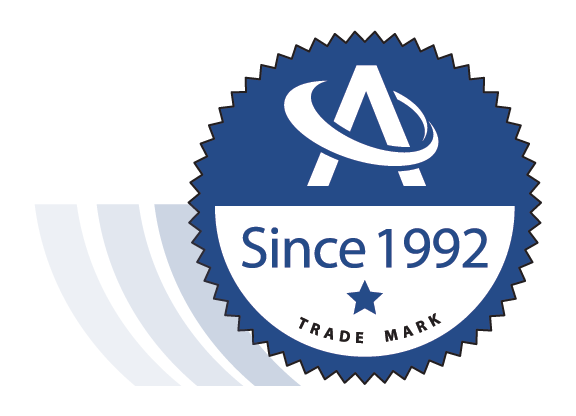Solving Common Challenges with Industrial Caster Wheels
Feb 6th 2025
Efficient mobility is critical in industrial environments, where smooth and safe movement of equipment directly impacts productivity and workplace safety. Businesses often need help with proper caster wheel selection despite its importance. Choosing the wrong industrial casters can lead to inefficiencies, safety risks, and unnecessary operational costs. For instance, wheels that cannot withstand heavy loads or specific surface conditions may cause equipment damage, worker fatigue, or accidents.
These issues persist because many companies must pay more attention to the significance of selecting the best castors for their specific needs. Load capacity, floor type, and operational requirements must align to ensure optimal performance. By addressing these challenges with the right caster solutions, businesses can improve efficiency, reduce costs, and maintain a safer work environment. This guide will teach us practical strategies to overcome common caster-related problems and improve industrial mobility.
1. The Problem of Mismatched Caster Wheel Types
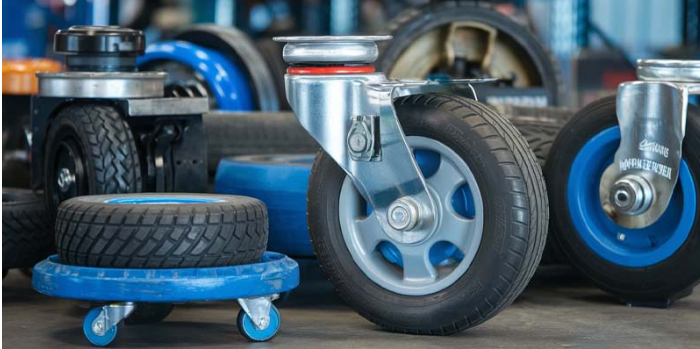
Selecting the wrong caster wheel type can lead to instability, equipment damage, and reduced performance. For example, using big caster wheels on uneven floors or 3 inch caster wheels for heavy machinery may cause tipping or wear. Proper alignment of caster wheel materials with floor types and load requirements is essential. Hard wheels may damage delicate floors, while soft wheels struggle on rough surfaces. A warehouse using 4 inch caster wheels on heavy loads over uneven concrete could experience downtime due to wheel failure. Matching caster types to specific conditions ensures smoother mobility, increased efficiency, and reduced maintenance costs.
2. Misunderstanding Weight Capacities: A Common Oversight
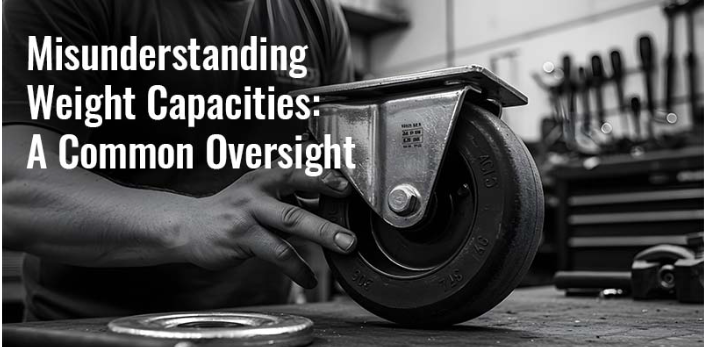
Ignoring load capacities when selecting casters can result in costly failures. Overloading heavy-duty locking casters beyond their limit can deform wheels, damage floors, and compromise safety. Businesses moving heavy loads, such as those requiring heavy duty casters rated for 1,000 lbs, often need to pay more attention to the strain on equipment. For example, using foam-filled tires for light loads may be efficient, but for heavy-duty machinery, inadequate capacity leads to downtime and repair costs. Ensuring proper weight specifications prevents accidents, reduces wear, and extends the lifespan of industrial casters, saving businesses significant time and resources in the long run.
3. Challenges in Choosing the Right Mounting Type
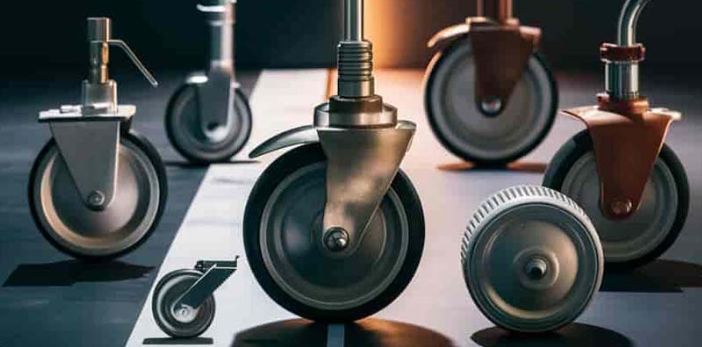
Improper mounting types can lead to equipment failure, instability, and operational inefficiency. Industries requiring mobility solutions must carefully assess whether stem casters, pneumatic wheels for carts, or v-groove mounts meet their needs. Stem casters offer flexibility and are ideal for lighter applications, while v-groove casters support precision tracking on rails. For example, a cart with the wrong mounting type may tip or fail to roll smoothly under heavy loads. Understanding the benefits and limitations of different mounting types ensures stability, reliability, and optimal performance in industrial operations.
4. Why Swivel Plate Measurements Matter
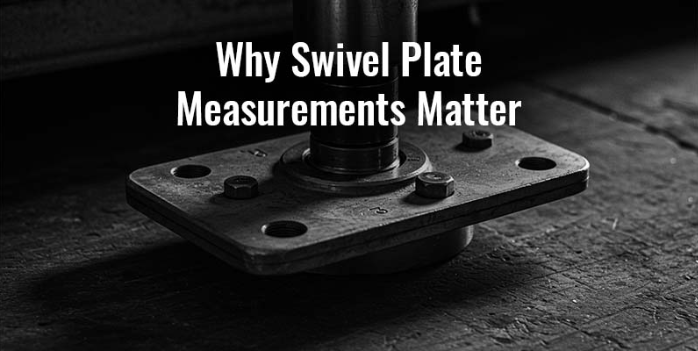
Incorrect swivel plate measurements can lead to serious operational challenges, including alignment issues, reduced mobility, and instability under heavy loads. Heavy-duty swivel plates must fit securely to function effectively. Misaligned plates can cause wobbling, uneven weight distribution, or reduced load capacity, which may result in accidents or equipment damage.
Steps to Measure a Swivel Plate Accurately:
-
Measure Plate Dimensions- Use a ruler or caliper to measure the length and width of the swivel plate.
-
Check Bolt Hole Spacing- Record the distance between bolt holes, ensuring they match the mounting surface.
-
Confirm Bolt Diameter- Measure the diameter of the bolts to ensure compatibility with the mounting hardware.
For example, failing to measure the bolt-hole spacing accurately could result in mismatched components, causing delays or instability during operation.
Key Benefits of Proper Measurement:
-
Ensures smooth mobility and alignment.
-
Reduces wear on the swivel plate and caster wheels.
-
Improved safety and efficiency, particularly for heavy loads.
Accurate swivel plate measurements before purchasing ensure optimal caster performance, extending the life of both the caster and the equipment it supports. This proactive step minimizes downtime and operational inefficiencies.
5. Durability Challenges with Big and Small Wheels
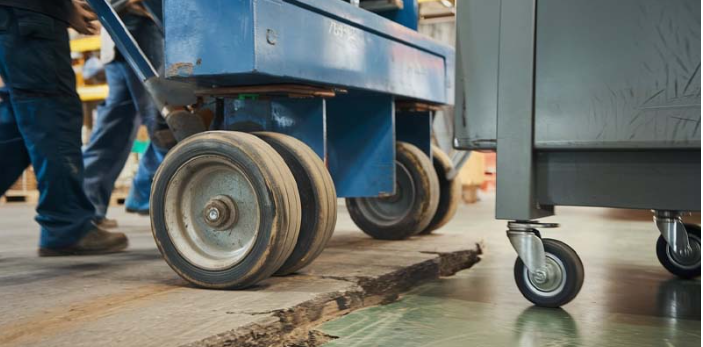
When choosing caster wheels for industrial use, it is crucial to understand the durability differences between small and large wheels. Each size has unique strengths and limitations that impact performance.
Small Wheels
-
It is ideal for compact spaces where maneuverability is a priority.
-
Work best on smooth, flat surfaces with lighter loads.
-
They are less durable on rough or uneven floors, as they are prone to wear and tear.
-
Limited ability to distribute weight effectively, leading to faster deterioration under heavy loads.
Medium to Large Wheels
-
Better suited for heavier loads and uneven terrain.
-
Larger diameters distribute weight more evenly, reducing stress on the wheel and flooring.
-
Provide smoother mobility over debris or cracks, minimizing damage and downtime.
-
They require more space for turning, making them less suitable for confined areas.
A common misconception is that bigger wheels are always more durable. While they excel at handling heavy loads and rough surfaces, the material and design of the caster are equally important. Choosing between 3-inch caster wheels, 4-inch caster wheels, or big caster wheels should align with load capacity, floor type, and operational needs for long-term performance and durability.
6. Ergonomic Challenges with Carts and Chairs
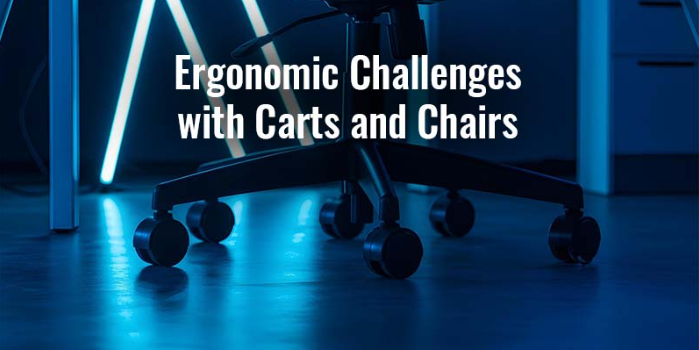
Poorly chosen casters for chairs and utility carts can significantly impact workplace ergonomics and productivity. Office chairs with the wrong casters often create unnecessary strain on users, causing discomfort and reducing efficiency. For instance, rigid plastic casters on delicate or uneven floors may increase resistance, requiring more effort to move the chair. Upgrading to soft, dual-wheel casters for chairs ensures smooth, quiet mobility while reducing physical strain.
Similarly, utility carts with inappropriate wheels can become difficult to maneuver, especially when handling heavier loads. A cart with pneumatic wheels is ideal for transporting goods over rough or uneven surfaces, as the air-filled design absorbs shocks and provides better stability. This reduces the risk of user fatigue and minimizes damage to transported items.
When selecting casters, businesses should consider the weight capacity, floor type, and desired mobility. For ergonomic benefits, lightweight applications require small, smooth-rolling casters, while heavier loads benefit from pneumatic or heavy-duty options. Proper caster selection improves efficiency and uplifts workplace safety and user comfort, addressing common ergonomic challenges faced in both industrial and office environments.
7. Maintaining Caster Wheels for Longevity
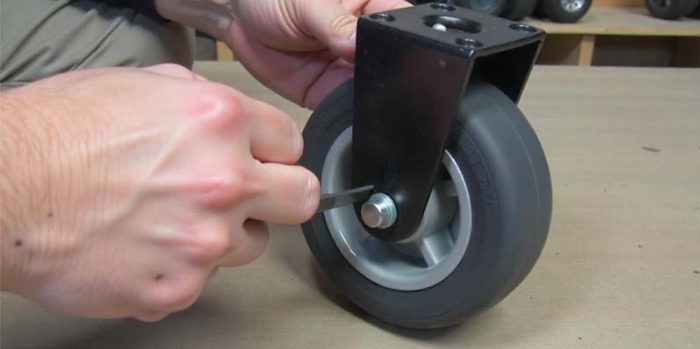
Proper maintenance is crucial for the longevity and overall performance of industrial casters. Neglecting routine care can lead to wheel failure, equipment damage, and safety risks. Typical maintenance tasks include:
-
Cleaning- Remove debris, dirt, or grease buildup hindering wheel movement.
-
Lubrication- Apply grease to the moving parts, like bearings. This will minimize friction and ensure smooth operation.
-
Wear Checks- Inspect wheels and axles for cracks, flat spots, or other signs of wear. Replace damaged components promptly.
Heavy-duty locking casters and foam-filled tires designed for rough terrain require special attention. If not inspected regularly, foam-filled tires may collect debris or lose effectiveness, while locking mechanisms on heavy-duty casters must remain functional to ensure stability.
Checklist for maintaining industrial casters:
-
Inspect wheels for debris or cracks weekly.
-
Clean and lubricate all moving parts monthly.
-
Test locking mechanisms periodically for secure operation.
-
Replace worn or damaged casters immediately to prevent further issues.
By incorporating these maintenance practices, businesses can extend the lifespan of their industrial casters, improve safety, and reduce downtime. Regular maintenance ensures optimal performance, even in demanding environments.
8. Selecting the Best Caster Wheels for Specific Applications
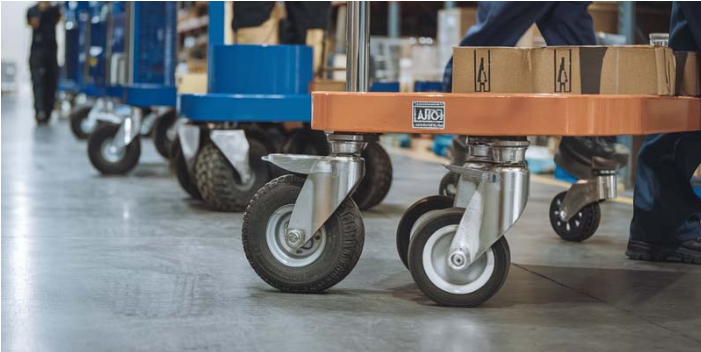
Choosing the best castors for specific applications requires careful evaluation of operational needs. For example, environments with extreme temperatures need casters made from temperature-resistant materials, such as thermoplastics or steel. Similarly, businesses prioritizing quiet operation should opt for rubber or polyurethane wheels to reduce noise levels.
A heavy-duty swivel caster is ideal for heavy-duty applications. These casters handle significant weight loads while allowing smooth, precise maneuverability. For instance, warehouses with high-load equipment benefit from casters designed for extreme weight handling to ensure safe and efficient movement.
Tips for selecting the best castors:
-
Identify floor conditions- Soft wheels work better on delicate floors, while rugged wheels excel on rough surfaces.
-
Consider load capacity- Match caster weight ratings with expected loads.
-
Evaluate special needs- Quiet operation, chemical resistance, or specific mounting types may be required.
Businesses can improve efficiency, reduce wear, and uplift operational safety by tailoring caster choices to their specific application. Whether selecting heavy-duty swivels for industrial equipment or lightweight casters for office furniture, understanding unique requirements is key to choosing the best castors.
Wrapping up
Industrial mobility hinges on selecting the right caster wheel types and maintaining them properly. Mismatched wheels, overlooked weight capacities, and incorrect mounting types can lead to inefficiency, equipment damage, and safety hazards. When choosing industrial casters, businesses must consider factors such as floor conditions, load requirements, and ergonomic needs. Proper maintenance—cleaning, lubrication, and regular inspections—further ensures long-term performance and cost savings.
Businesses can improve productivity and create safer workplaces by investing in high-quality caster solutions, such as heavy-duty options for demanding environments or specialized casters for office chairs and utility carts. Whether it’s 3-inch wheels for compact spaces or heavy-duty swivels for industrial equipment, prioritizing thoughtful selection and upkeep avoids costly downtime and ensures smooth operations.
Check out our reliable caster wheel solutions at Atlanta Caster to meet your specific mobility challenges and ensure your business stays efficient and safe. Contact us today to learn more about our range of industrial casters.




 Email US
Email US
 Hours
Hours
 Visit Our Showroom
Visit Our Showroom




